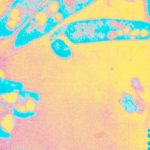Link to Pubmed [PMID] – 2254665
J. Immunol. Methods 1990 Dec;134(2):177-85
The design of a strategy for the control of large scale cultures of hybridoma cells requires the use of convenient indicators to monitor properly the evolution of the biomass. In order to select appropriate indicators, we have measured in parallel, in bulk cultures of mouse hybridoma cells, the evolution of several metabolic parameters together with those of cell density and viability. We observed that flow cytometry analysis gives an early indication of the proliferative capacity of the cell population. Determination of metabolic rates (i.e. glucose, glutamine, amino acid, consumption, lactic acid or ammonium production) adequately indicates the current metabolic status of the cells. Indeed, a sharp decrease in these metabolic rates occurs rapidly following nutrient deficiency. Finally, measurements of lactate dehydrogenase (LDH) and DNA fragments released into the culture supernatants accurately reflect the kinetics of cell death.

